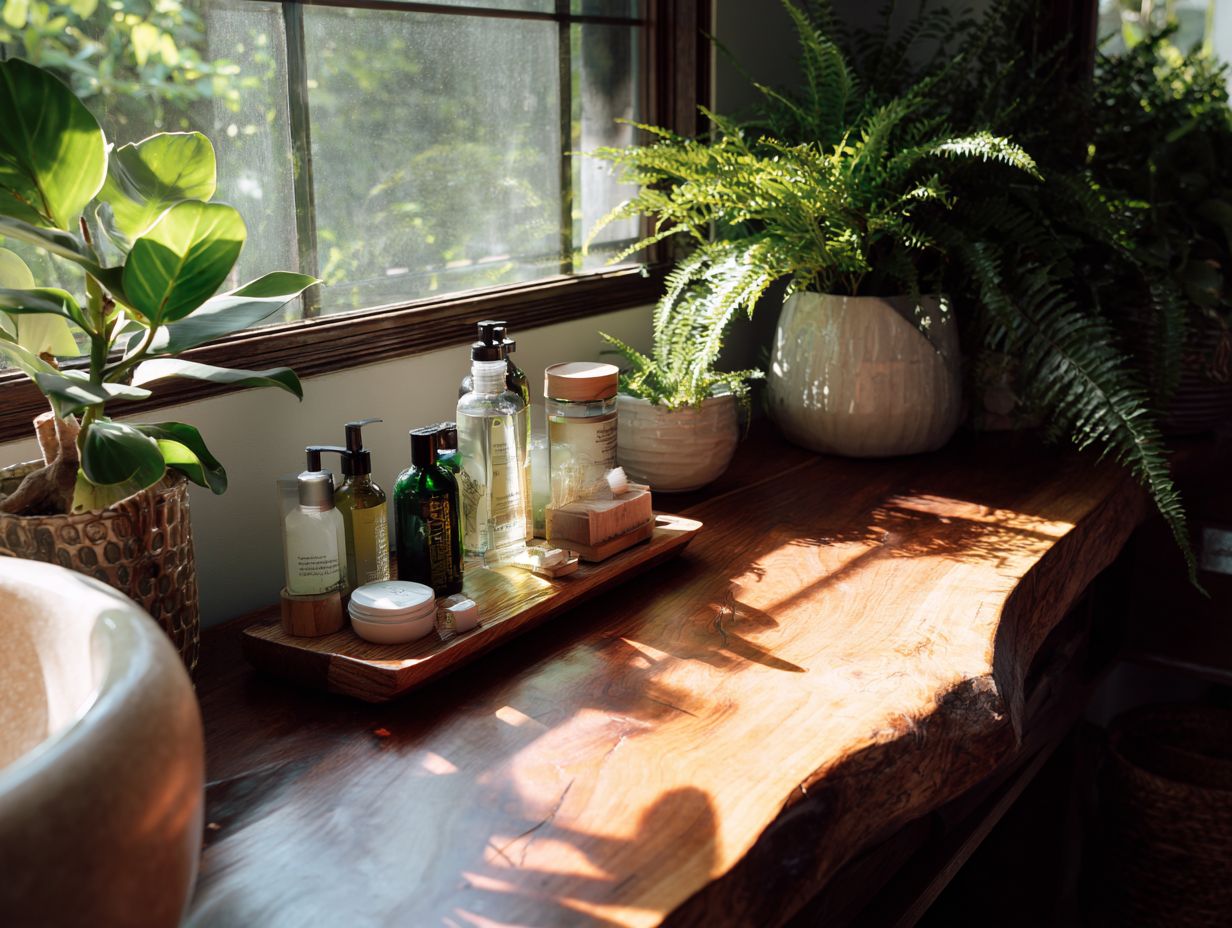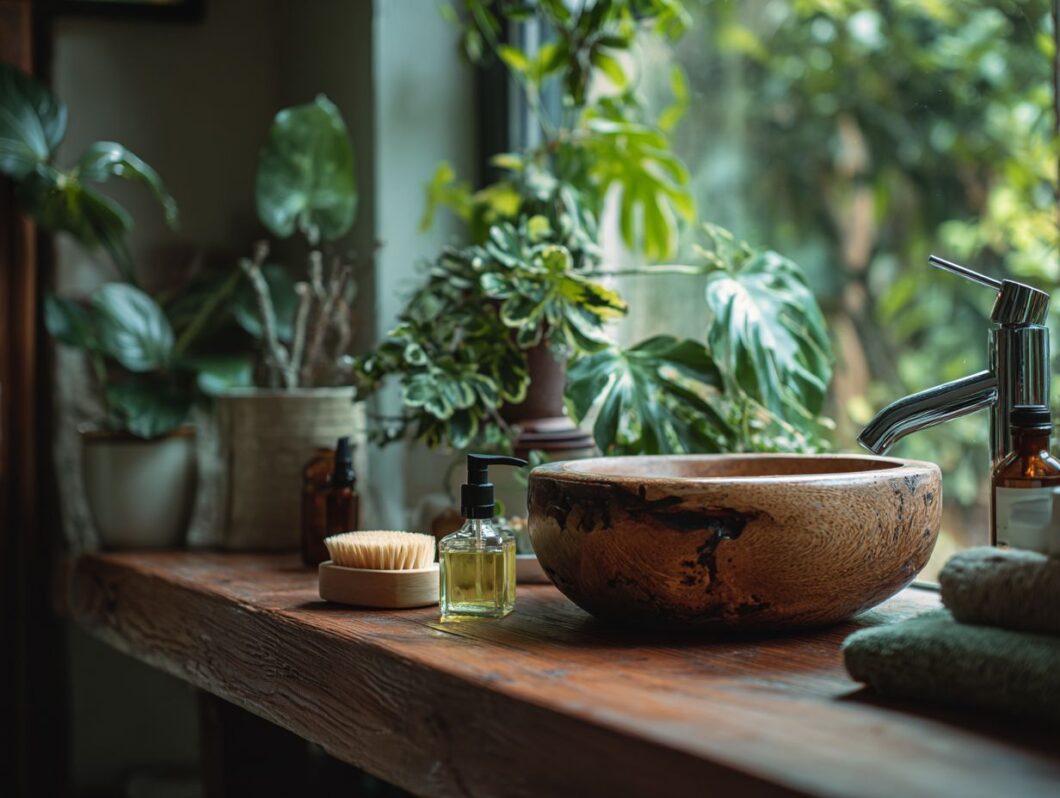As I embarked on my own journey to a cleaner, healthier beauty routine, I discovered just how many hidden toxins lurked in my products. Detoxing my beauty regimen became essential not only for my skin but also for my overall well-being. In this guide, I’ll share seven simple steps that helped me assess my current products, research clean alternatives, and embrace minimalism, all while incorporating natural remedies and maintaining a healthy lifestyle. Join me as we explore how to revitalize your routine and nourish your skin from within.
Understanding the Need for Detox

I recognize that many beauty products contain toxic ingredients such as parabens and sulfates, which can lead to skin irritations and pose long-term health risks. Parabens, widely used as preservatives, have been associated with hormone disruption, potentially impacting reproductive health. Similarly, sulfates, commonly found in shampoos and cleansers, can strip natural oils from the skin and hair, resulting in dryness and irritation.
To promote ingredient transparency, I prioritize brands that provide clear labeling and avoid products containing harmful chemicals. I also utilize resources like the EWG’s Skin Deep database, which offers valuable insights into product safety, enabling me to choose safer alternatives.
Ultimately, being informed gives me the power as a conscious consumer to to select products that prioritize my health and well-being.
Step 1: Assess Your Current Beauty Products
Conducting a comprehensive evaluation of my current beauty products can help identify harmful substances, including toxic products and artificial colors, that may be adversely impacting my skin health.
Identifying Harmful Ingredients and Skincare Challenges
I prioritize being aware of key harmful ingredients such as parabens, phthalates, and synthetic fragrances that are often present in personal care products. This awareness aids in identifying beauty challenges related to skin sensitivity and health impacts.
Parabens, which are commonly used as preservatives, have been linked to hormonal disruptions, raising concerns about their long-term effects on health. Phthalates, frequently found in many fragrances, are suspected carcinogens that may also impact reproductive health. Additionally, synthetic fragrances can provoke allergic reactions in sensitive individuals.
To make informed choices, I recommend utilizing the Think Dirty app, which allows users to scan products for these harmful ingredients and suggests safer alternatives. This approach enables me to maintain my beauty routine while actively protecting my health.
Step 2: Research Clean Beauty Alternatives
Transitioning to clean beauty necessitates conducting thorough research into alternatives that are free from toxic ingredients and prioritize overall skin health.
What to Look for in Clean Beauty Products
When selecting clean beauty products, I prioritize those that are cruelty-free, organic, eco-friendly, and free from synthetic preservatives and fragrances. Ensuring cleanliness in my beauty rituals supports a holistic beauty approach.
I begin by looking for certifications such as USDA Organic or Leaping Bunny, which indicate a commitment to safe and ethical practices. Next, I carefully review ingredient lists, steering clear of products with long lists filled with unrecognizable chemicals. Instead, I choose brands that emphasize natural ingredients, like botanical extracts and oils.
I also pay attention to pH balance, opting for products tailored to my skin type to ensure they maintain my skin’s natural acidity. Additionally, I utilize tools like the EWG’s Skin Deep database to research product safety and ingredient transparency.
Step 3: Gradually Replace Toxic Products for Sustainable Beauty

I am developing a gradual replacement plan for toxic products to facilitate the transition to a healthier beauty routine, ensuring that my skin is not overwhelmed in the process.
Creating a Replacement Plan for a Beauty Overhaul
I utilize a spreadsheet to monitor my current products alongside their clean alternatives, with a focus on costs and ingredients. I begin by listing daily essentials such as cleansers, toners, and moisturizers. For instance, if I currently use a popular foam cleanser that contains sulfates, I will research clean alternatives like an organic oil-based cleanser.
In my spreadsheet, I include notes on any skin reactions or improvements I notice after making the switch. I find tools like Google Sheets or Excel particularly useful for sorting and filtering entries to facilitate easier comparisons.
I make it a point to regularly update the spreadsheet as I experiment with new products or come across better options, ensuring that my skincare routine continually evolves toward a cleaner, healthier regimen.
Step 4: Embrace Minimalism and Routine Simplification
I find that adopting minimalism in my beauty routine significantly enhances my skin health while simplifying my daily regimen.
Benefits of a Simplified Beauty Regimen
A simplified beauty regimen can significantly enhance skin health, increasing its resilience while minimizing the risk of irritation. To streamline my routine, I focus on three essential steps: cleansing, moisturizing, and sun protection.
-
For cleansing, I opt for a gentle, sulfate-free cleanser, such as CeraVe Hydrating Cleanser.
-
Next, I follow up with a lightweight, non-comedogenic moisturizer like Neutrogena Hydro Boost Gel, which hydrates my skin without clogging pores.
-
Lastly, I make it a point to apply a broad-spectrum SPF, such as La Roche-Posay Anthelios, every morning to protect my skin from harmful UV rays.
Research indicates that minimalistic routines can lead to a 30% increase in skin hydration, a finding supported by user testimonials and endorsements from dermatologists.
Step 5: Incorporate Natural Remedies and DIY Beauty Treatments
I find that incorporating natural remedies into my beauty routine can significantly enhance its effectiveness, offering viable green beauty alternatives to commercial products while also being environmentally friendly.
Popular DIY Beauty Treatments

I find that experimenting with DIY beauty treatments can be a rewarding way to identify what works best for my skin while avoiding harsh chemicals.
I like to start with simple recipes, such as a honey and oatmeal face mask, which involves combining 1 tablespoon of honey with 2 tablespoons of finely ground oatmeal. This mask provides soothing and hydrating benefits.
For a brightening scrub, I mix 1 cup of sugar with 1/2 cup of coconut oil, adding a few drops of lemon juice. This combination not only exfoliates but also allows the coconut oil to moisturize effectively.
I always make it a point to patch test a small area first to check for any allergies or sensitivities, particularly with citrus ingredients, as they can sometimes cause irritation for certain skin types.
Step 6: Maintain a Healthy Lifestyle and Beauty Balance
I believe that a holistic approach encompassing proper nutrition and hydration can greatly enhance the detoxification of the skin from within.
Nutrition and Hydration for Skin Health
Maintaining a balanced diet and ensuring adequate hydration significantly contributes to clearer skin and an improved overall appearance. Nutrition and hydration are integral to achieving radiant skin and fulfilling beauty goals.
To enhance my skin health, I prioritize certain key foods. I incorporate avocados into my meals, as they are rich in healthy fats that provide internal moisturization. Additionally, I make it a point to include salmon in my diet due to its Omega-3 fatty acids, which are essential for maintaining skin elasticity and hydration. Spinach is another staple for me, as it is packed with vitamins C and E-powerful antioxidants that help combat oxidative stress.
I also limit my intake of dehydrating beverages like soda and caffeine, opting instead for water or herbal teas to maintain my body’s natural hydration balance.
Step 7: Monitor Your Skin’s Response for Beauty Transformation
Monitoring my skin’s response during this detox journey is essential for making the necessary adjustments to my routine.
Tracking Changes and Adjustments for Personal Wellness
I utilize a tracking method to log daily observations about my skin’s condition, allowing me to make necessary adjustments to my products. I have created a straightforward template for documenting these observations.
Each day, I record the product used, my skin’s immediate reactions-such as redness or breakouts-and its overall condition, whether it’s dry, oily, or balanced.
For example, if I notice dryness after using a particular moisturizer, I consider switching to a more hydrating formula or incorporating a hydrating serum into my routine.
I review my entries on a weekly basis to identify trends, such as whether my skin improves with increased hydration or specific ingredients. This reflective practice informs my skincare choices and enhances my overall routine.
Frequently Asked Questions About Beauty Detoxification

What is a beauty routine detox?
A beauty routine detox involves eliminating or reducing the use of products that are potentially harmful or toxic to your body and the environment. This can include ingredients such as parabens, sulfates, and synthetic fragrances.
Why should I consider detoxifying my beauty routine?
Regular use of products with harmful ingredients can have negative effects on your health in the long run. Detoxifying your beauty routine can help reduce your exposure to these toxins and promote overall well-being.
How can I start detoxifying my beauty routine?
Start by reading the labels of the products you currently use and looking for potentially harmful ingredients. Begin to replace those products with cleaner, more natural alternatives.
Can I detox my beauty routine on a budget?
Absolutely! There are many affordable and natural DIY options for skincare and beauty products that you can make at home using ingredients from your pantry.
What are some examples of harmful ingredients to avoid in beauty products?
Some common harmful ingredients to avoid in beauty products include parabens, phthalates, sulfates, synthetic fragrances, and formaldehyde. These chemical-free alternatives can potentially disrupt our hormonal balance and have negative effects on our health.
What are the 7 simple steps to detox my beauty routine?
1. Start by reading ingredient labels and avoiding harmful additives. 2. Switch to natural products and organic ingredients. 3. Use DIY beauty options for skincare and beauty products, incorporating essential oils for added benefits. 4. Invest in reusable, sustainable packaging for a mindful beauty routine. 5. Reduce the number of products you use to minimize environmental impact. 6. Incorporate healthy habits, like drinking more water and eating a balanced diet, promoting skin nourishment and skin clarity. 7. Stay consistent, embrace a beauty philosophy, and make small changes for long-term impact.


